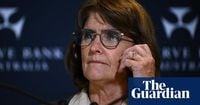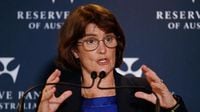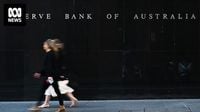The Reserve Bank of Australia (RBA) has opted to maintain the official cash rate at 4.1% during its April 1, 2025, meeting, a decision that aligns with widespread market expectations. This marks a continuation of the RBA's cautious approach as it navigates a complex economic landscape influenced by global factors, particularly the impending tariffs announced by US President Donald Trump.
In a statement following the meeting, the RBA's monetary policy board acknowledged that recent developments regarding US tariffs are significantly impacting global confidence. The board noted, "Recent announcements from the United States on tariffs are having an impact on confidence globally and this would likely be amplified if the scope of tariffs widens, or other countries take retaliatory measures." This statement underscores the RBA's concerns about how international economic shifts could reverberate back to Australia.
RBA Governor Michele Bullock emphasized that while the board did not explicitly discuss the possibility of a rate cut during the meeting, they remain vigilant regarding potential economic downturns. "It did talk a little bit about downside risks, including the global downside risks. But it did not explicitly discuss a rate cut," she explained to reporters.
This decision comes after the RBA made a notable 0.25 percentage point cut in February, marking the first downward adjustment since November 2020. Despite some market speculation about further cuts, the likelihood of a reduction in May has decreased, now sitting at approximately 75%, down from 85% prior to the meeting.
Following the announcement, the Australian dollar strengthened, and the stock market showed signs of stability, with the S&P/ASX 200 index closing 1% higher. This positive market reaction suggests investor confidence in the RBA's decision to pause on rate cuts while assessing the broader economic implications of US trade policies.
Economists have been closely monitoring inflation trends, with the Australian Bureau of Statistics set to release its next quarterly inflation update on April 30, just ahead of the RBA's next scheduled meeting in mid-May. This upcoming data will be crucial in shaping the RBA's monetary policy strategy moving forward.
Deloitte Access Economics' Pradeep Philip commented on the RBA's decision, noting that while the hold may disappoint some, it was not unexpected. "The RBA clearly sees the next move in inflation as an each-way bet and has decided to hold fire on a second consecutive rate cut," he said.
On the global front, the RBA is wary of how tariff-related geopolitical uncertainties could impact economic growth. Bullock highlighted that Australia is less directly exposed to the US than many other nations, but the potential for retaliatory tariffs and a slowdown in global trade remains a concern. "Fragmentation in world trade, less open world trade, isn't great for Australia, because that's how we've thrived," she said.
Moody's Analytics associate economist Shannon Nicoll suggested that the RBA may be keeping its options open for future rate cuts should economic conditions worsen. He stated, "Keeping some cash rate cuts in the back pocket could prove handy if demand flatlines or if heightened international uncertainty weighs heavily on Australia."
As the RBA navigates these uncertainties, the focus remains on both domestic and international economic indicators. The central bank has expressed a cautious optimism regarding inflation, which has been trending downwards since its peak in 2022. Bullock reiterated the RBA's commitment to sustainably returning inflation to the target range of 2-3%, a goal that remains paramount for the board.
Looking ahead, market analysts are divided on the timing and likelihood of future rate cuts. Commonwealth Bank economists have forecast that the trimmed mean Consumer Price Index (CPI) will register at 0.6% for the first quarter of 2025, which could influence the RBA's decision-making process in May. Gareth Aird, the bank's head of Australian economics, indicated that a trimmed mean CPI below the RBA's expectations would make a rate cut in May a "done deal." However, Bullock remained noncommittal, stating, "I'm going to wait and see what the numbers tell me, and it will depend very much on what else is going on as well."
Despite the challenges posed by global economic conditions, the RBA's recent decisions reflect a careful balancing act between fostering economic growth and managing inflationary pressures. The board's cautious stance is further reinforced by the complexities of the current political climate, with an election campaign underway that has heightened public scrutiny of economic policies.
As the RBA approaches its next meeting, the interplay between domestic economic performance and international trade dynamics will be critical in shaping its policy direction. The board's commitment to monitoring these developments closely suggests that while interest rates remain unchanged for now, the potential for adjustments looms large on the horizon.
In conclusion, the RBA's decision to hold interest rates at 4.1% reflects a broader strategy aimed at navigating uncertain global economic conditions while keeping an eye on domestic inflation trends. With the upcoming inflation report and the potential fallout from US tariffs, the coming weeks will be pivotal for the Australian economy and the RBA's monetary policy.







